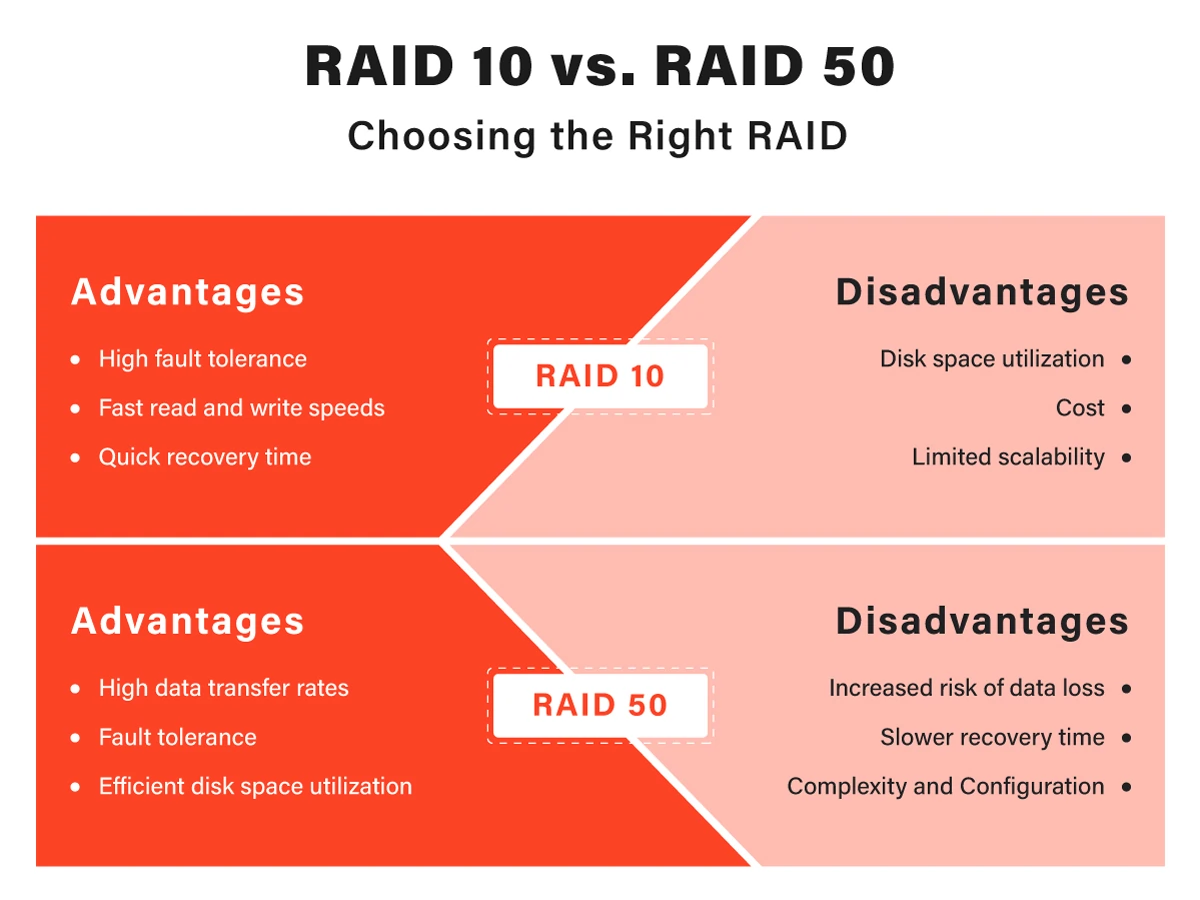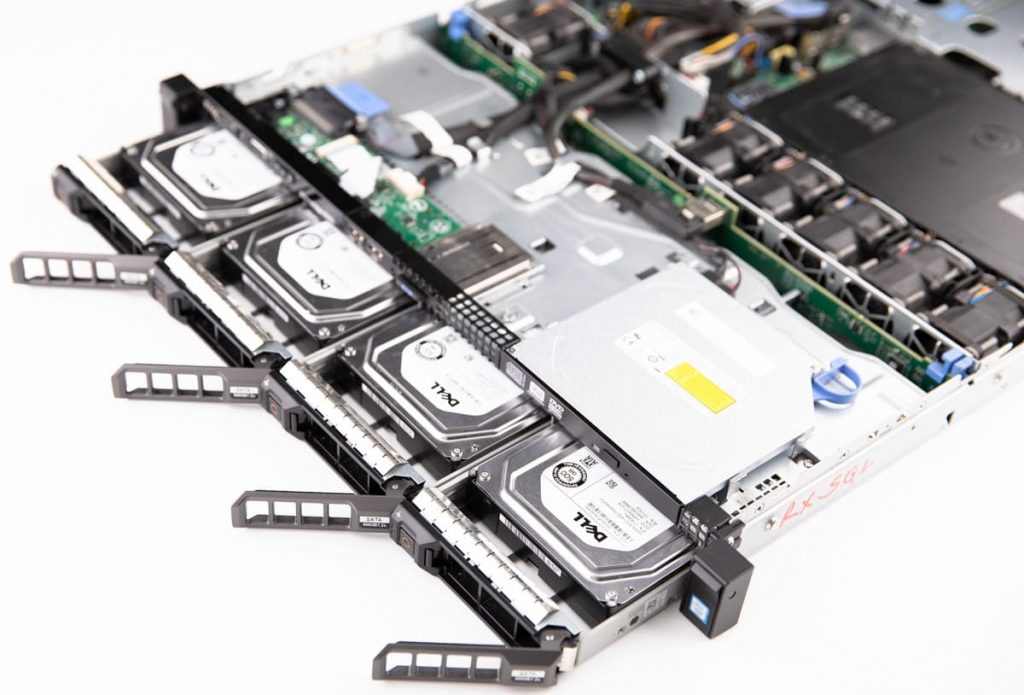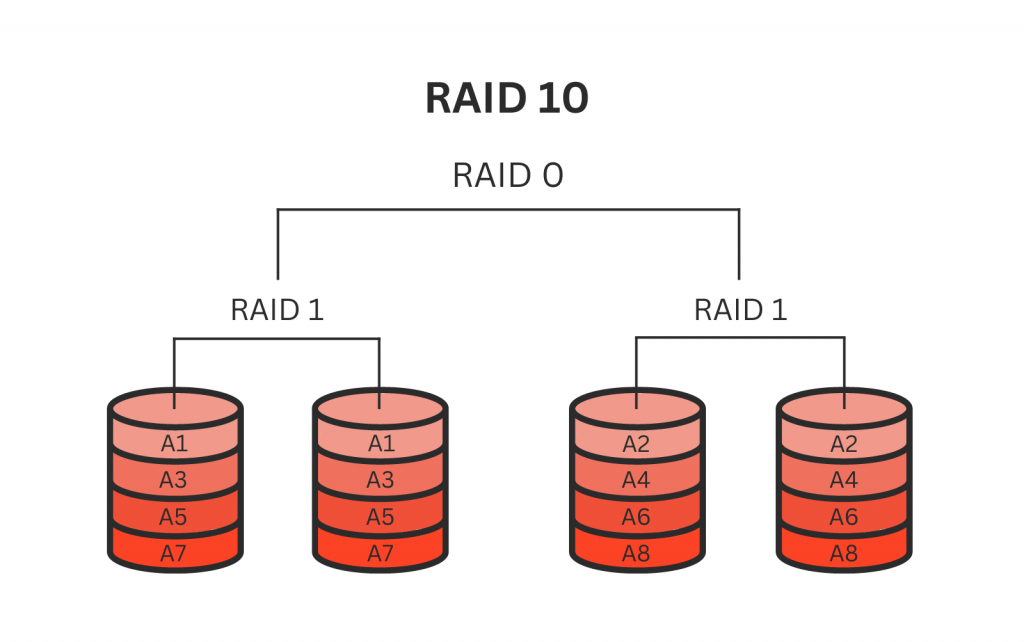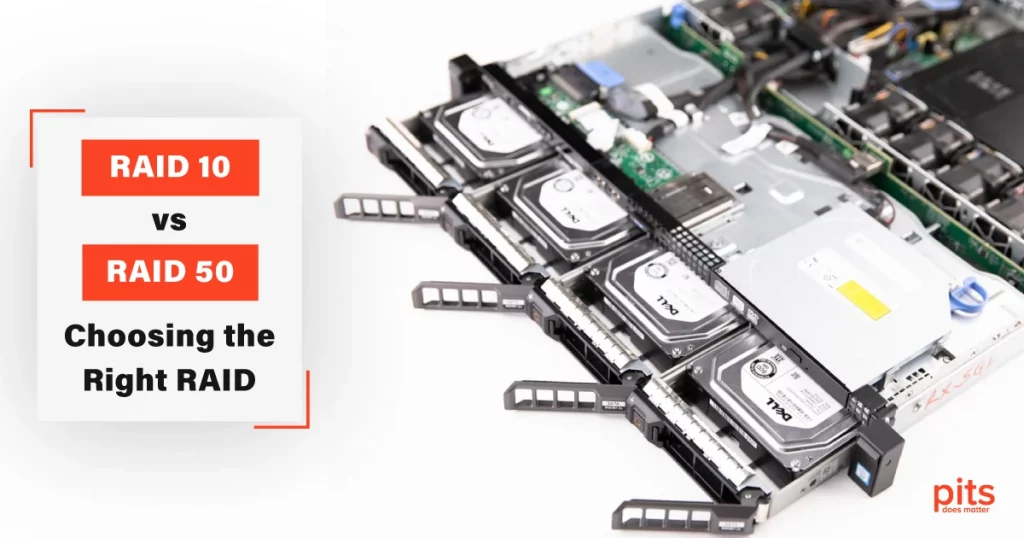When it comes to data storage and protection, implementing a reliable RAID (Redundant Array of Independent Disks) configuration is crucial. RAID combines multiple physical hard drives into a single logical unit, offering improved performance, fault tolerance, and data redundancy.
Two popular RAID levels, RAID 10 and RAID 50, are often considered due to their robustness and performance. In this article, we will delve into the advantages and disadvantages of RAID 10 and RAID 50, allowing you to make an informed decision when choosing the right RAID for your needs.

Understanding RAID Levels: RAID 10 vs. RAID 50
Before diving into the specifics of RAID 10 and RAID 50, it is essential to grasp the basic concepts of RAID levels. RAID configurations are classified into different levels, each providing distinct advantages and trade-offs based on the desired outcome.
RAID levels commonly used include RAID 0, RAID 1, RAID 5, RAID 6, RAID 10, RAID 60, and more. For comparison, we will focus on RAID 10 and RAID 50.
RAID Level 10 - Definition
Advantages of RAID 10
RAID 10 combines the features of RAID 1 (mirroring) and RAID 0 (striping). It requires a minimum of four drives, and data is mirrored across multiple disks while simultaneously striping the data for improved read and write performance. Key advantages of RAID 10 include:
- High fault tolerance. RAID 10 can withstand multiple disk failures without losing data as long as disks from the same mirrored pair do not fail simultaneously.
- Fast read and write speeds. With data striping, RAID 10 provides faster read and write operations, making it ideal for applications that require high I/O performance.
- Quick recovery time. In the event of a disk failure, the recovery time is relatively fast since data can be rebuilt by copying the mirrored data from the surviving disks.
Disadvantages of RAID 10
While RAID 10 offers excellent performance and fault tolerance, it does have a few drawbacks to consider:
- Disk space utilization. RAID 10 consumes half of the total disk space for mirroring, resulting in reduced overall capacity.
- Cost. Implementing RAID 10 requires a higher number of drives, which can be costly compared to other RAID configurations.
- Limited scalability. Expanding RAID 10 arrays can be challenging since it requires additional mirrored pairs.
What is RAID Level 50
Advantages of RAID 50
RAID 50 combines the features of RAID 5 array (striping with distributed parity) and RAID 0 (striping). It offers excellent fault tolerance and performance, making it suitable for many enterprise applications. The advantages of RAID 50 include:
- High data transfer rates. RAID 50 arrays can provide excellent read and write speeds because of the striping configuration across multiple disks.
- Fault tolerance. RAID 50 can withstand multiple disk failures as long as they occur within different RAID 5 sets.
- Efficient disk space utilization. RAID 50 provides better disk space utilization compared to RAID 10 since it does not require mirroring.
Disadvantages of RAID 50
While RAID 50 is a robust RAID level, it also has some limitations:
- Increased risk of data loss. Data loss can occur if multiple disks fail within the same RAID 5 set. Therefore, RAID 50 does not provide the same level of fault tolerance as RAID 10.
- Slower recovery time. Rebuilding data after a drive failure in RAID 50 can be time-consuming, as it involves the reconstruction of parity data.

RAID 10 vs. 50 - What to Choose?
Fault Tolerance
When it comes to fault tolerance, RAID 10 and RAID 50 offer different levels of protection. RAID 10 provides a higher level of fault tolerance since it can sustain multiple disk failures as long as they do not occur in the same mirrored pair.
This redundancy ensures that even if one disk fails, the data remains intact and accessible. On the other hand, RAID 50 can tolerate multiple disk failures as long as they happen in different RAID 5 sets. If multiple disks fail within the same set, data loss can occur. Therefore, RAID 10 provides a more robust fault tolerance mechanism.
Disk Space Utilization
RAID 10 utilizes half of the total disk space for mirroring, resulting in reduced overall capacity. For example, if you have four 1TB drives in a RAID 10 configuration, the usable capacity will be 2 TB. In contrast, RAID 50 does not require mirroring and provides better disk space utilization.
It combines striping with distributed parity across multiple disks, allowing for more efficient utilization of available disk space. Therefore, RAID 50 offers higher usable capacity compared to RAID 10.
RAID 10 versus RAID 50 Data Loss Risk
Since RAID 10 employs mirroring, the data loss risk is significantly lower than RAID 50. In RAID 10, the data is still available on the mirrored disk even if a disk fails. This redundancy minimizes the chances of data loss.
However, in RAID 50, if multiple disks fail within the same RAID 5 set, data loss can occur. RAID 50 carries a higher risk of data loss compared to RAID 10.
RAID 50 vs. 10 Controller Requirements
Both RAID 10 and RAID 50 require a RAID controller to manage the array. However, the controller requirements may vary based on the specific implementation. RAID 10 generally requires a controller that supports mirroring and striping functionality.
On the other hand, RAID 50 demands a more advanced controller capable of handling distributed parity calculations. It is important to ensure that your RAID controller is compatible with the desired RAID level to maximize performance and functionality.
RAID 10 vs. RAID 50 Performance
When it comes to read and write performance on RAID 50 vs 10, both levels offer significant improvements compared to a single disk configuration. RAID 10 provides excellent performance due to the striping mechanism, which allows data to be read from and written to multiple disks simultaneously.
This makes RAID 10 ideal for applications that require high I/O performance, such as databases or virtualization environments. RAID 50 also provides good read and write speeds due to the striping across multiple disks, but it may not match the performance levels of RAID 10. The distributed parity calculations in RAID 50 can introduce additional overhead, leading to slightly slower performance than RAID 10. Hence, when comparing RAID 10 to RAID 50 performance, you should choose one based on the applications that you use.
In conclusion, choosing the right RAID 10 or 50 levels depends on your needs and priorities. RAID 10 offers high fault tolerance, fast read and write speeds, and quick recovery time, but it consumes more disk space and can be expensive to implement.


When considering RAID 10 vs RAID 50, RAID 10 prioritizes fault tolerance and performance, while RAID 50 emphasizes efficient disk space utilization with a trade-off of slightly increased data loss risk.
RAID 50 provides efficient disk space utilization, high data transfer rates, and is suitable for applications that require good fault tolerance. However, it carries a higher risk of data loss and slower recovery time.
Carefully evaluate your requirements, including fault tolerance, disk space utilization, performance, and budget constraints, before deciding between RAID 10 and RAID 50. It is also advisable to consult with a professional or IT expert to ensure that the chosen RAID level aligns with your specific needs and infrastructure.
Frequently Asked Questions
What is the main difference between RAID 10 and RAID 50?
RAID 10 combines disk mirroring and striping, offering high fault tolerance and improved performance. RAID 50, on the other hand, combines striping with distributed parity for efficient disk space utilization and good data transfer rates.
Which RAID configuration provides better data protection?
Both RAID 10 and RAID 50 offer data protection, but RAID 10 provides higher fault tolerance. It can withstand multiple disk failures as long as they don’t occur in the same mirrored pair. RAID 50 can tolerate multiple disk failures as long as they happen in different RAID 5 sets.
Which RAID level offers better performance?
In terms of performance, RAID 10 generally outperforms RAID 50. The combination of mirroring and striping in RAID 10 allows for faster read and write speeds. RAID 50 also provides good performance, but the overhead of distributed parity calculations can impact its overall speed.
How does disk space utilization differ between RAID 10 and RAID 50?
RAID 10 consumes more disk space because it duplicates data across multiple drives for mirroring. In contrast, RAID 50 utilizes distributed parity across multiple drives, resulting in more efficient disk space utilization. This means RAID 50 can provide higher usable capacity compared to RAID 10.
Which RAID configuration is more cost-effective?
RAID 10 typically requires more drives since it involves mirroring, making it more costly to implement. RAID 50, on the other hand, requires fewer drives and offers efficient disk space utilization, making it a more cost-effective option. However, the exact cost-effectiveness may vary based on factors such as drive capacity, brand, and specific implementation requirements.
